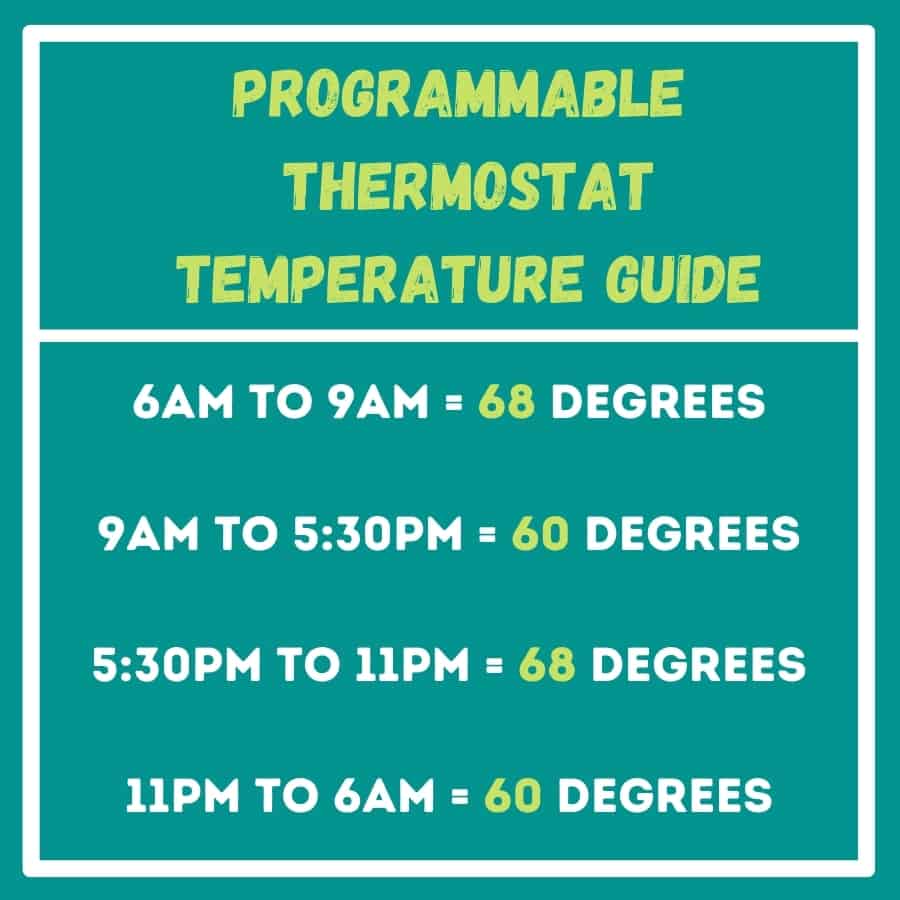REDUCE HOME HEATING COSTS
Some simple things you can do to cut down on your heating bills, save money and keep your house warm! Read on for energy saving tips…

Now that the weather is starting to cool down, you might be dreading that utility bill coming your way! There are some simple changes you can make to keep your house warm without breaking the bank. While you could make some large changes like adding insulation to your attic or replacing all your windows, here’s a list of easy-to-do and inexpensive energy saving tips to help you get started.
- Install a Programmable Thermostat
A programmable thermostat will let you preset temperatures all throughout the day — this is good because you don’t need to keep your home at the same temperature the entire day. You can choose a lower setting at night when you’re sleeping, or aren’t in the house for long periods of time. Then have a higher setting when you need it, see the handy guide below for an idea of how this would work.

2. Close the Flue
When your fireplace damper is open, it lets the same amount of heated air escape as a wide-open 48 inch window! Make sure your flue is closed when you don’t have a fire going, and if you want to take it a step further, reduce the number of times you use your fireplace altogether. Sure a fire feels nice and warm, but it exhausts over 20,000 cubic feet of heater are per hour to the outside, every BTU that goes up the chimney is replace by cold air pulled into the house elsewhere, and heating that cold air can cost you a lot of money.
3. Ceiling Fans
When you use your ceiling fans in warm weather, they spin counterclockwise, which moves air around the room. If you have especially high ceilings, the fans help bring heated air down into the room. However, that’s only if you switch the directions of the spin to the clockwise position. Run the fan at it’s lowest speed and if you feel the fan is cooling the room down too much, turn it off.
4. Move Furniture Away from Heat Sources
Man times a couch, chair or bed moved during the summer can block the flow of heat into a room. This wastes money and leads to cold rooms as the furniture is absorbing the heat. If you have a forced-air system, blocking a supply or return vent can cause a house-wide pressure imbalance that disrupts the heat flow in the whole system, so be careful your vents aren’t covered!
5. Quick-Seal Windows
Dead air is a great insulator and you can create a pocket of it by installing clear plastic film on the inside of your windows. If you find it unsightly, you can place the film on select windows or patio doors or only in unused rooms. If you can rattle your windows, they’re letting a lot of heat escape around the frames. Seal the open spaces with puttylike rope caulk before shrink wrapping. Press in place rope caulk is mess-free and easy to use and removing it in the spring is easy as well!
6. Adjust Your Water Heater
You use more hot water in the winter, lower the water heater temperature from 140 degrees to 120 degrees, and make sure you take showers instead of baths. According to the U.S. Department of Energy, the average bath consumes up to 25 gallons of hot water, while a five minute shower uses up only around 10 gallons.
For the rest of this list visit This Old House! We also suggest the U.S. Department of Energy’s website, which provides many easy and practical energy-saving tips. If you need anything, please reach out to us today!
